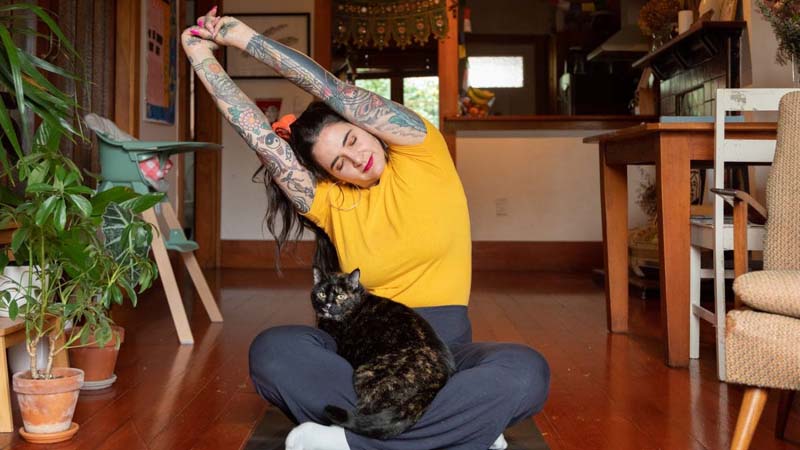![[feature] How Stretching This Sneaky Muscle Could Improve Your Low Back Pain](https://blogger.googleusercontent.com/img/a/AVvXsEiugLnD-WMC2_yH0KXpjcQpAdVwewgJSmof8sOJqTjDQn7AK26mi7g21yfV1gqg-SLv7IjuRvu2IKHDZabMV0sP_fudufzdxNe8IIyuXotS5lBVcZO2YjECIXW1RBB5cU_2cvxmkpURtsBYA6R7-onlYIohR2db1ilIsCe_3f7F3QHDoi9bSMnrFIt6=s16000-rw) |
| © Getty / Jessie Casson |
“One of the sneakiest muscles that no one talks about enough is the quadratus lumborum, known as ‘the QL,’” says Liz Letchford, PhD, ATC, an injury prevention specialist and athletic trainer. “The muscle functions to hike the hip, as well as provide stability between the rib cage and the pelvis.”
This is actually a super deep abdominal muscle, on either side of the lumbar spine (your low back), and Dr. Letchford explains that this ‘sneaky’ band of muscle fibers can contribute to back pain for a number of reasons, including poor posture, sitting without proper support, as well as a weak core. This stress and strain on the QL can then lead to achiness in the low back.
So how to best deal with this? There are a few options: You can start with a (gentle!) stretch, some myofascial release, and (the most recommended) a trip to a physical therapist or movement specialist to ensure you’re not injured—and that you won’t injure yourself further by trying to stretch it on your own with improper form.
“The QL is likely tight because the pelvic musculature isn’t working optimally,” explains Dr. Letchford. “Stretching may provide relief in the short term, but the best approach would be to work with a movement specialist to determine where you may be compensating.”
Read More: Here's to A Fresh Start with Whatever You Do in '22
Try this gentle stretch if you get the okay from a PT
- Start by standing in a door frame.
- Determine the side that’s causing the pain (if both, you can repeat on both sides).
- Using the arm on the pain-free side (or whichever side you start on), place your hand on the door frame near you for support. Stabilize with your leg on the same side, keeping the weight in that foot.
- Take the arm on the sore side, stretch it up and reach over your head to the door frame on the opposite side (up and over).
- Step with the foot on the sore side crossed behind your opposite, stable leg.
- Stretch gently for a few seconds, stopping if there’s pain.
Additionally, one of Dr. Letchford’s favorite treatments for sore, tight muscles is a type of myofascial release using a ball. You can lay on your back on a yoga mat, and place the ball under the muscle to release built-up tension, break up blocked up tissue, etc. Just be careful with this one! “The QL attaches to the twelth rib, which is where the kidneys are located,” she says, “So be gentle when you’re doing foam rolling or myofascial release with a ball, as you don’t want to hurt your kidneys!”
As always, if you have back pain, it could be for a number of reasons—and it’s a tricky area! So be sure to consult a professional to be on the safe side.
See more at Well+Good
























